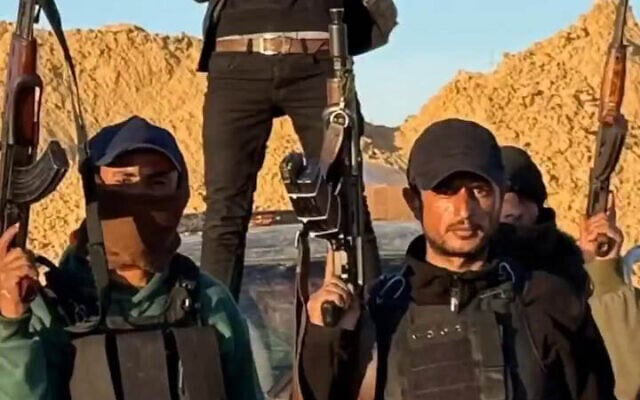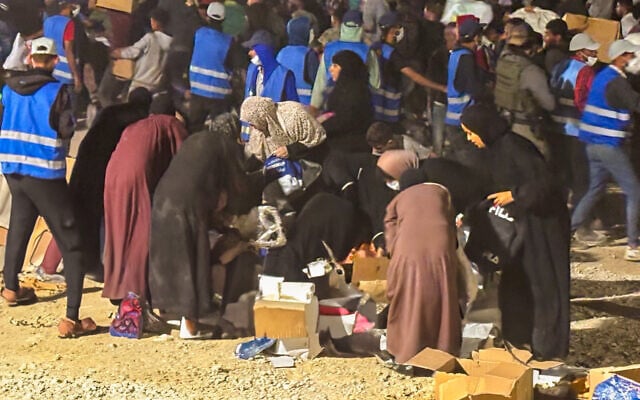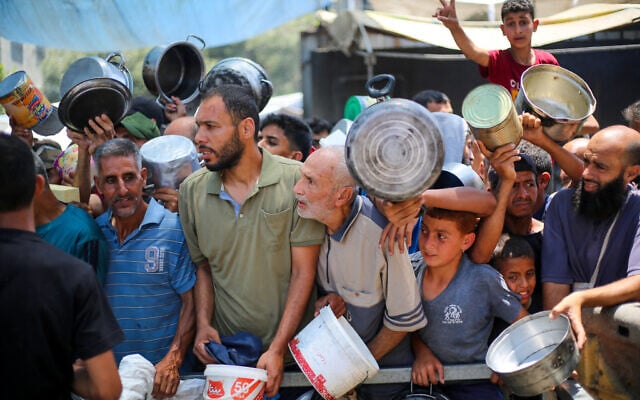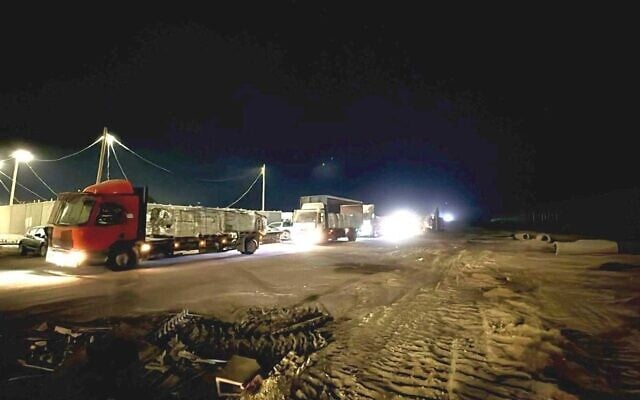



Gaza’s Hamas-run police force said Thursday that it killed 12 members of the Israeli-backed Abu Shabab militia in Gaza, which said its fighters had killed five Hamas operatives but made no mention of its own casualties.
It was not immediately possible to verify the competing claims or confirm the identities of those killed.
According to Hamas, the Abu Shabab gunmen were killed early Wednesday by the Gaza police’s Sahm unit, which Hamas says was established to combat looting. The unit released video footage showing several dead men lying in the street, saying they were Abu Shabab fighters who had been detained and killed for collaborating with Israel. It was not possible to verify the images or the claims around them.
Abu Shabab has been operating in an Israeli-controlled area of southern Gaza’s Rafah. Israel confirmed last week that it was arming the militia to bolster opposition to Hamas.
Abu Shabab has said it secures aid deliveries but been accused of looting aid trucks. Meanwhile, Israel on Thursday released what it said were Hamas documents showing the terror group maintained a policy of confiscating 15%-25% of aid entering Gaza since the war there was sparked by the Hamas onslaught of October 7, 2023.
The killings came shortly after the US- and Israel-backed Gaza Humanitarian Foundation (GHF) accused Hamas of attacking a bus carrying its Palestinian aid workers, killing at least eight, and preventing the wounded from being treated at a hospital in the Strip. GHF interim CEO John Acree said some employees “may have been taken hostage.”
Dozens of Palestinians have been killed while trying to reach GHF distribution points since they began operating in late May, according to Hamas’s civil defence agency. The IDF has confirmed firing warning shots in at least eight instances, but disputed the Hamas death tolls.
The civil defense agency said another 21 people were killed while waiting for aid on Thursday, adding that they were among 29 people across the territory who were killed by Israeli fire.
When contacted by AFP about reports of a deadly incident near an aid distribution point close to the Netzarim corridor in central Gaza, the Israeli military said it had “conducted warning shots… hundreds of meters (yards) from the aid distribution site, prior to its opening hours.”
In an update after accusing Hamas of firing on its Palestinian employees, GHF said Thursday that the terror group had blocked the Red Cross from transporting victims to the Nasser Hospital in the southern city of Khan Younis.
A crowd soon gathered at the scene, forcing the Hamas terrorists to retreat, the update said.
GHF said Hamas members threatened hospital staff from treating the employees, adding that “all wounded and dead local workers were piled in the Nasser Hospital parking lot,” where, as of 2:00 p.m. Thursday, they have remained without treatment.
“The GHF is committed to helping the wounded and the families of the deceased and injured,” read the update. “We are working through many channels to transfer the injured from the hospital in Khan Younis to facilities with more robust capabilities.”
The statement called on “parties holding the remains of the deceased to immediately release them to their families,” and vowed to keep “delivering food aid to the people of Gaza after this tragedy.”
GHF’s leadership slammed Hamas as “cowardly murderers” and “absolute evil,” and accused the UN and Western nations of failing to condemn the killings. Hamas’s government media office, in comments to AFP, accused the agency of having “become a filthy tool in the hands” of Israel, “used to lure civilians into deadly traps.”
Despite the attacks, GHF delivered the most meals it has in a single day on Thursday, according to its own figures. The aid group also said overnight that it distributed boxes of food at its distribution site in central Gaza, even though the IDF has repeatedly warned Palestinians not to approach aid sites before 6 a.m.
A GHF spokesperson did not explain why the organization appeared to be distributing aid overnight, when the IDF has cautioned Palestinians against walking to the sites.
On Thursday, GHF said, it opened three sites, two in southern Gaza’s Tel Sultan and one at Wadi Gaza in the central Strip. The agency said it distributed over 45,000 boxes of food aid, with more than half of those distributed at its original aid site in Rafah, near the shore along the Gaza-Egypt border. According to the agency, each box contains meals for 5.5 people for 3.5 days.
However, GHF does not provide Gazans with ready-to-eat meals, as aid groups recommend in such humanitarian crises. Instead, the boxes are filled largely with dry food products whose preparation requires cooking equipment, which is rare in the devastated Strip.
Separately, for the first time in months, Israeli authorities allowed humanitarian aid trucks to directly enter the northern Gaza Strip on Wednesday.
The 56 trucks from the World Food Program were transferred to northern Gaza via the Zikim Crossing, also known as the Erez West Crossing, the Coordinator of Government Activities in the Territories announced.
COGAT said the move comes following “the approval of the political echelon and on the recommendation of the security authorities.”
Israel halted the flow of aid to Gaza on March 2, hours after the collapse of a ceasefire-hostage deal with Hamas. Deliveries were renewed on May 19, but only via the Kerem Shalom crossing in the Strip’s south.
Israel has accused Hamas throughout the war of hoarding aid to finance operations and pay operatives.




